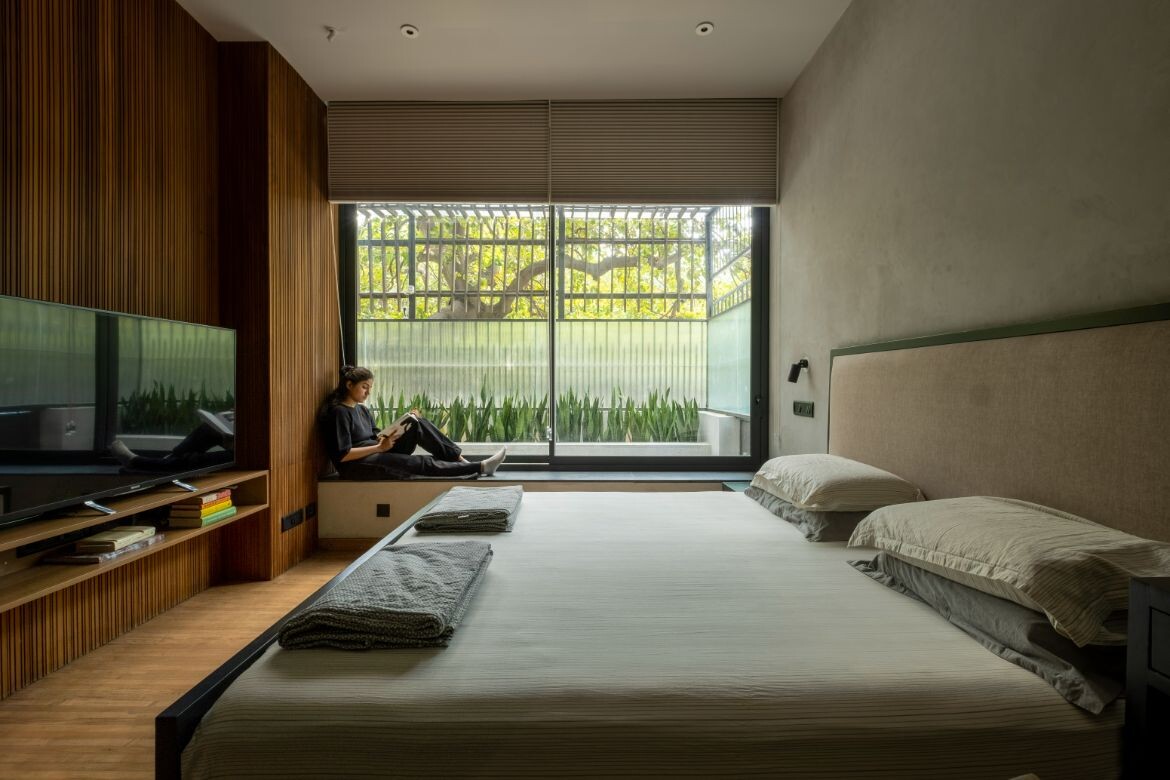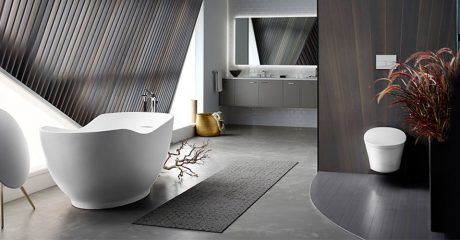Nestled within the ancient Siri Fort in Delhi, SiriHaus stands as a testament to the seamless fusion of history and contemporary design. With views overlooking verdant ruins, this nearly half-century-old building has undergone a transformative journey to become a haven of warm minimalism.
With years of neglect having left its mark on the building, it took visionary owners to breathe new life into it. The owners are eminent figures in the product and apparel design industry and presented an enticing challenge to the architects at Amit Khanna Design Associates (AKDA).
The owners sought a home that defied the pervasive maximalist trends, instead embracing a warm palette of natural materials while maintaining an uncluttered ambience, characterised by what they define as “warm minimalism”.

The restoration journey of the 280-square-metre home began with an excavation that unravelled layers of accumulated detritus, a process that revealed the hidden potential within the building’s history. Beneath the surface lay a mosaic of history, with slate, tiles, and marble flooring spanning different eras. Carefully peeling back these layers, the original terrazzo flooring was rediscovered, hinting at the building’s timeless essence.
Spatial reorganisation became the key to crafting a cohesive design. A continuous ribbon of living space was envisioned, flowing seamlessly from the front to the back of the house. Bedrooms are discreetly nestled along the outer surface, concealed by a seemingly unassuming wood-clad wall. This clever design tactic incorporates structural columns as functional elements, ingeniously transforming into wardrobes, entertainment niches, and storage areas.

True to the owners’ original brief, the material choices exude warmth and understated elegance. Rich wood harmoniously complements egg-shell terrazzo, while a soft-textured plaster finish adorns the walls and ceilings, adding a tactile dimension to the interiors. The thoughtful selection of robust materials, such as stainless steel for the kitchen and aluminium for the windows, ensures both durability and practicality.
An exercise in reductive design posed its challenges, demanding that every element held its own. The furniture selections showcased expert craftsmanship, skilfully combining wood, stone, and metal in perfect harmony. Neutral fabrics add a touch of sophistication to the upholstery, while carefully repurposed old oak wood found new life as a truly hardy (and more sustainable) floor.

Even the house’s exterior received a deliberate touch. An aligned row of cacti adorns the entry, creating a formal yet inviting anteroom. An example of how the meticulous approach extended to every aspect, right down to the choice of plants.
The restored SiriHaus now stands as if it has existed forever, much like the neighbouring fort that shares its history. The restorative vision brought forth by the clients and AKDA has turned this home into an emblem of warm minimalism. By peeling back the layers of time and crafting a new chapter, SiriHaus is a timeless and cherished abode.
Project details
Architecture and interiors – AKDA
Builder – Build Design Workshop
Photography – Courtesy AKDA
We think you might like Kanso House in Delhi by Melange Studio, which offers a warm and welcoming interiors.
























